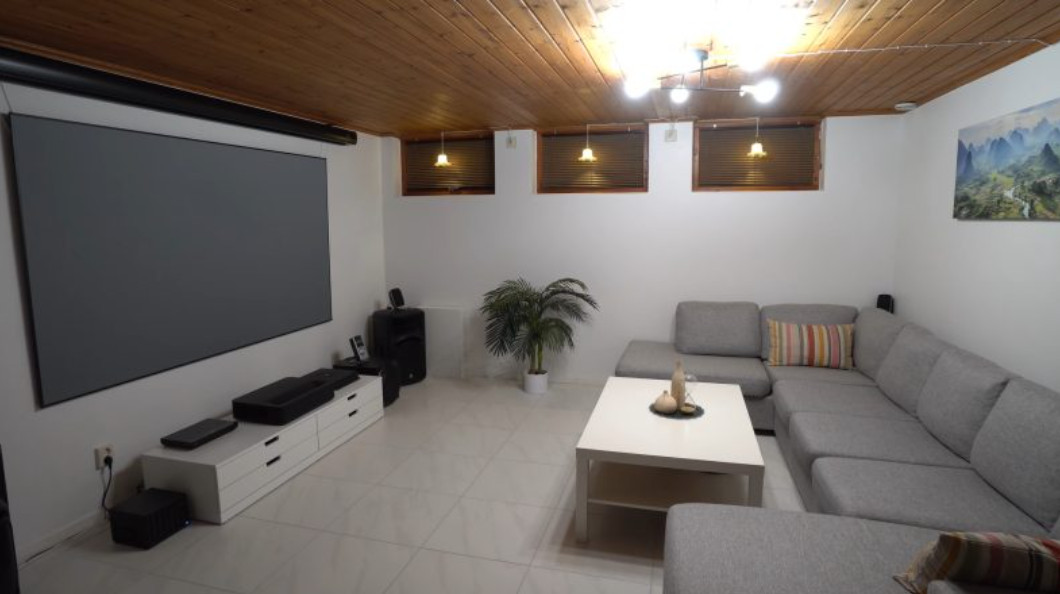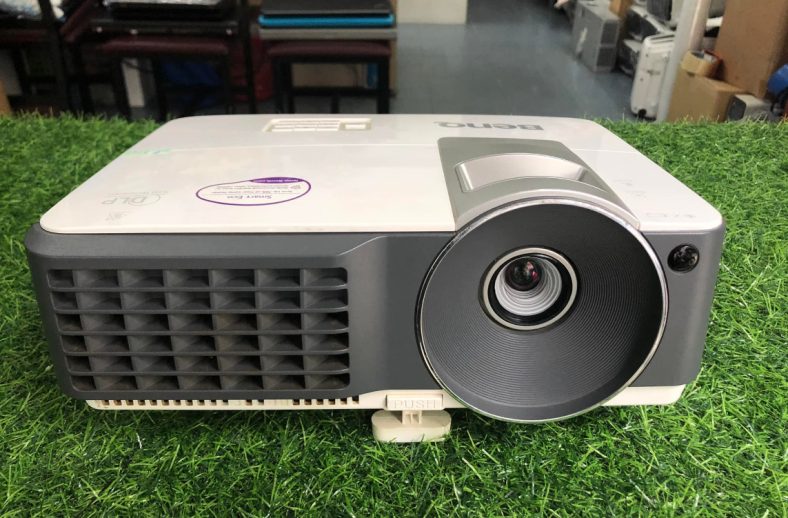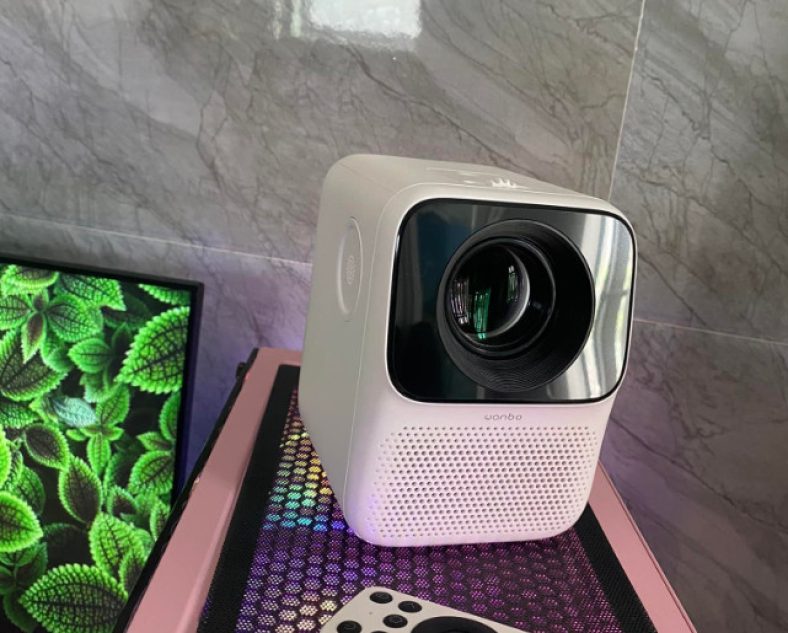
How Big are 90, 100, 110, 120, 150-inch Projector Screens?
There is no denying that projector screens can be significantly larger than the latest and greatest flat-screen TVs. Yet, chances are TVs will never be able to keep up with the size of the projector screen. If so, the cost will be very high.
Generally, creating a large-sized projector screen is significantly less expensive and more straightforward than designing and building a similarly-sized TV.
If you’re contemplating switching from a TV to one of those quality screens, it’s essential to know its size.
So let’s find out how big are 90, 100, 110, 120, 150-inch projector screens?
Table of Contents
How Big are 90, 100, 110, 120, 150-inch Projector Screens?
The projector screen is available in various sizes, allowing you to choose the one that suits best for your room. Here, let’s take a look at the 5 most popular sizes.
90 inches
The 90-inch screen isn’t that big for the other options listed on our list. However, it’s still larger than most TVs, with the most extensive ones ranging from 65 to 85 inches.
For the physical dimensions, this monitor features a 4:3 aspect ratio, with a width of 6 feet (72 inches) and a height of 4.5 feet (54 inches).
Additionally, some monitors have a 16:9 aspect ratio, such as the Yard Master, which measures 6.5 feet (78 inches) wide and 3.67 feet (44 inches) tall.
The 90-inch model will be closer to large TV territory than a large monitor for projectors as these monitors can be much larger than that.
Related: Is a projector preferable than a TV?
100 inches
100-inch screens come in two aspect ratios, including 16:9 and 4:3.
A 16:9 model is 7.25 feet (or 87 inches) wide and 4.08 feet (or 49 inches) high, such as the Taotique. On the other hand, a 4:3 product would be 6.67 feet (80 inches) wide and 5 feet (60 inches) high, such as the Elite Manual B.
A 100-inch model is not the biggest yet but will be significantly larger than 90-inch offerings.
Related: What about projectors for gaming?
110 inches
110-inch screens are also available in two aspect ratios: 4: 3 and 16: 9.
Models with a 4:3 aspect ratio are 7.34 feet (88 inches) long and 5.5 feet (66 inches) wide, such as the Aoxun 110″.
Meanwhile, 16:9 monitors measure 8 feet (96 inches) long and 4.5 feet (54 inches) high, such as a product from Silver Ticket.
A 110-inch model will allow you to reach “cinema” territory, even though commercial theater screens are much larger. Either way, the 110-inch screen will still give you the feel the same, similar.
110-inch screens should belong to dedicated entertainment spaces
So if you want to turn your bedroom into a home cinema, this type may not be suitable. Instead, 90- or 100-inch monitors would work better in this case.
If your bedroom and living room are large enough, it is okay to use one of the 110-inch screens. However, we always recommend something under 110 inches for non-specialized projector spaces.
Related:
– How far should a projector be from the screen?
– How many differences can you discern between DLP and 3LCD projectors?
120 inches
You can also find 120-inch products in two different aspect ratios.
A 4:3 screen’s measurements will be 8 feet (96 inches) long and 6 feet (72 inches) high, while its 16:9 counterpart will be 105 inches (8.75 feet) long and 59 inches ( 4.91 feet) tall.
Equipping with 120-inch screens will allow you to be ready for outdoor and move one step closer to the home cinema experience.
The 120-inch models also work well for 4K, such as the YODOLLA and the Mdbebbron
150 inches
The 150-inch models will not be suitable for indoor use. Instead, it will ask you to go outside with it and watch the video below to see how big it is.
The monitor in the video is a product from Elite, which features a 4:3 aspect ratio with dimensions of 10 feet (120 inches) wide and 7.5 feet (90 inches) high.
You can also easily find 16:9 screens which are 10.91 feet (131 inches) wide and 6.17 feet (and 74 inches) high, like the JWSIT Store.
These screens can give you the movie theater experience for small gatherings. And as mentioned above, they work best when placed outdoors.
How Far Should You Be Seated from the Screen?

You will get the best viewing experience with a projector if you get the proper seating set up and good sound.
Selecting a good seat is not just about the comfort of your chair/couch and the physical nature. Instead, it is also about how far your seat is from a screen.
To determine the best distance from the screen, you will need to measure the size of your screen diagonally before dividing it by 0.84. For instance, the optimal distance from a 120-inch screen would be 3.63 meters or 142.85 inches.
If your seating is optimal for 50- and 60-inch TVs, it is essential to make some adjustments to accommodate a projector screen that can be much larger than that.
You should remember that the optimal viewing distance calculated through the calculation method may not be standard in all cases.
Instead, it may need to be altered slightly depending on the specific needs and circumstances, but it should work in most cases.
Related:
Not All Same-Size Screens Work Out Evenly

As explained above, the larger size model will not necessarily give you a better viewing experience. In addition, products of the same size do not necessarily perform the same.
Therefore, you will likely need to consider many other factors besides size.
Aspect Ratios (Screen Formats)
As mentioned above, the aspect ratio of a screen will determine how small or big a projector screen will get. The fact is that projector screens are available in various aspect ratios or formats, which include:
- Video/NTSC (aspect ratio: 4:3)
- HDTV (aspect ratio: 16:9)
- Widescreen (aspect ratio: 16:10)
- Square (aspect ratio: 1:1)
- CinemaScope (aspect ratio: 2.35:1)
The first two aspect ratios ( 4:3 and 16:9) are the most common options. Older televisions have a 4:3 ratio, while HDTVs (or current-gen models) feature a 16:9 aspect ratio.
Decode Aspect Ratio
The 1st digit in this ratio refers to the screen’s width, while the second number refers to the screen’s height. For example, 16:9 screens indicate the screens have measurements of 16 feet wide and 9 feet in height.
It is clear that 16:9 and 4: 3 are only the ratio, and it does not mean all screens to adhere to these ratios need to be or should be that big.
For example, a 120-inch screen with an aspect ratio of 16:9 will be 105 inches (8.75 feet) long and 59 inches (4.91 feet) tall.
On the other hand, if 100-inch screens follow different aspect ratios, such as 1:1 and 4:3, their physical dimensions may change and look larger somehow.
Projector-Supported Size And Ratio
One of the other essential aspects that you need to keep in mind is the aspect ratio that your projector supports.
Also, your projector’s flexibility and positioning with movement or portability will determine the proper screen format and size.
For example, a set-into-place or fixed projector will not work well with a 1:1 and 4:3 format screen. If your screen is a bit larger, your projector can not fill this screen.
You’ll face the brightness issue or your projector’s ability to illuminate the screen entirely. If you buy a canvas that is too larger for the lumen output or your projector, the brightness levels you receive might fade at the peripheries and be more fantastic at the center.
Ideal Applications
16:9 models will be the perfect choice for watching sports and TV shows. Besides, showing widescreen contents on screens with the 1:1 and 4:3 configurations is impossible, and you will face the black bars at the bottom and top of your screen.
Besides, you’ll also get black bars if you watch movies on models that feature a 16:9 aspect ratio, as most films are produced with a 2.35:1 balance, especially the latest ones.
If you plan to invest in a massive screen for the projector just to watch movies, we recommend purchasing a CinemaScope screen as it is the most value-for-money model you can get.
On the other hand, if you’re looking for something to enjoy other types of content, you should go with 16:9 screens.
4:3 or 1:1 models will work best for slide projections, lecture halls, classrooms, or wherever flexibility is required to accommodate various video formats.
Compared to the 16:9 ratio, the 4:3 ratio will require more vertical space, making it perfect for outside your home or in academic & business settings.
The 16:9 model can make an outstanding balance between the CinemaScope and 4:3 ratio, making it the most popular choice.
Related:
– How do you build a projection screen outside?
– How long do the bulbs in projectors last?
A Larger Model is Not Always Better

The large size is one of the advantages of projector screens, putting them on par with TVs. However, choosing a larger model is not always your best option.
It will be a great movie theater viewing experience with a model that can fill your vision. However, if you do not understand your visual field well, you will most likely buy a product that is larger than necessary.
If you buy a model that is too big for you, you may face two common problems:
Overwhelming
A too larger product can make it challenging to consume in its larger total. For example, when enjoying your favorite content, you may have to move your head sideways, which will make you feel uncomfortable.
So having to move your neck muscles continuously and in the wrong way can cause tension, making you lose interest in watching movies with a projector.
Loss of Clarity
A larger monitor can raise the size of the pixels, resulting in images you get that are not clear or look too pixelated.
The good news is that 4K resolution projectors, such as the TK800M or the HT3550 from BenQ, will not cause pixelation concerns.
However, you will probably face the clarity issue if you buy any model with a lesser resolution, including native 1080p projectors that can scale up to 2K or 4K.
FAQs
What to Consider When Buying an Outdoor Projector?
Here are five things to consider when buying an outdoor projector:
- Brightness
- Throw Ratio
- Contrast Ratio
- Resolution
- Price
How Far Should I Sit From the 4K Projector?
Many manufacturers recommend a distance ranging from 1.5 to 3.5 picture heights for 4K (and from 3.0 to 3.5 is ideal for 1080p HDTV).
Does It Matter Where You Sit in a Cinema?
The center positioning is also good for sound. That way, you will have the best placement for surround sound, and your ears will catch the full effect of all the speakers.
How Do I Know What Size Projector Screen to Buy?
Measure the length from the top-left to the bottom-right corner of your screen.
Conclusion
Unlike TVs, the machines are larger and are available in many aspect ratios to choose from. Meanwhile, TVs are often stuck with HDTV, which leads to limitations. Hence, a projector screen is well worth the money regarding aspect ratio and size variations.
It is always unwise to buy a more extensive product than you need. Understanding the projector screen is essential to determine what size will work well with your space and meet your needs.
Thank you for reading! Please share this article if you find it useful.





